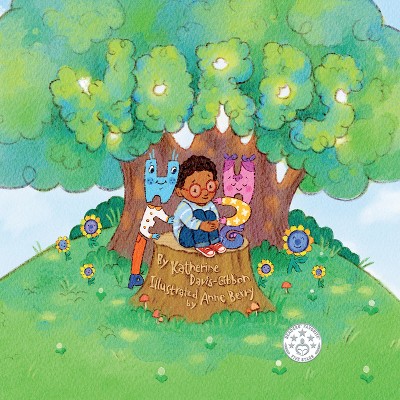About this item
Highlights
- "Aviate Navigate Communicate" is the story of Wayne Sand's life flying into and learning about severe weather.
- About the Author: Wayne Sand, a Montana native, started his flying career by being taught how to fly in Super Cubs by a crop sprayer while in high school and then by becoming a flight instructor throughout college.
- 284 Pages
- Biography + Autobiography, Aviation & Nautical
Description
About the Book
"Aviate Navigate Communicate" is designed to pass on the lessons Wayne Sand learned during his time flying weather research airplanes and studying the impact of weather on aircraft accidents. As a scientist and pilot, he flew highly instrumented airplanes into severe weather--thunderstorms, lightning, hail, rain, snow, icing, mountain-induced weather, wind shear, and microbursts--to collect data for science. With a deeper understanding of the science involved with severe weather, dive into true stories that will enable pilots and others to better understand potentially severe weather.Book Synopsis
"Aviate Navigate Communicate" is the story of Wayne Sand's life flying into and learning about severe weather. When a flight instructor tells a pilot to avoid a weather phenomenon, they need to understand why, based on their personal and their airplane's limitations. "Aviate, Navigate, Communicate" is also a priority sequence learned early in every pilot's career; however, while flying, especially during difficult situations, pilots have trouble remembering and/or applying the sequence. Flying the airplane (Aviate) is always the number one priority, then keeping spatially oriented (Navigate), and lastly, talking to somebody about it (Communicate). Remembering to follow each of these steps while simultaneously coping with a severe weather encounter can become a daunting task, even for the most experienced pilots. Having spent a lifetime as a pilot, weather researcher, and aviation weather consultant, Wayne has extensive experience in the world of weather and piloting an aircraft in adverse weather. This book describes some of the aviation weather-related experiences and lessons learned by Wayne throughout his career in an entertaining and educational way. These lessons will help pilots better understand the atmosphere we all live and work in, what to avoid, and why. Since learning to fly in his teenage years, Wayne has always been taught to keep his priorities straight: aviate, navigate, and communicate. He was blessed to be initially trained to fly by a former World War II flight instructor who believed in seat-of-the-pants flying, providing him with a strong aviation foundation. With this foundation, Wayne built a successful aviation career that helped further weather-related science. Within these pages, take on an in-depth discussion of the hazards associated with stratiform and cumuliform clouds; discover the dangers of wind shear, microbursts, and icing; and understand the continued need to learn all about Mother Nature and the importance of the attitudes required of pilots to keep themselves and their airplanes safe. All readers are guaranteed to become enlightened and entertained by the experiences, descriptions, and insights Wayne offers.Review Quotes
Reviewed by Carol Thompson for Readers' Favorite
Wayne R. Sand's Aviate Navigate Communicate: How Severe
Weather Affects Airplanes and Pilots is an absorbing blend of
aviation memoir, meteorological insight, and practical instruction.
Drawing on a lifetime of flying in challenging conditions, Sand uses
his journey from a Montana teenager learning to fly crop dusters to
a Navy pilot and atmospheric scientist to anchor his broader goal:
helping pilots understand the crucial interplay between weather
and flight. The book is divided into three main parts. The first
chronicles Sand's early experiences with aviation, emphasizing the
influence of his no-nonsense flight instructor, Ora Lohse. These
formative stories establish his credibility and introduce readers to
the foundational mantra of "aviate, navigate, communicate." In the
second section, Sand turns toward educating readers about specific
weather phenomena that affect flight, such as stratiform and
convective clouds, icing, turbulence, wind shear, and mountain
weather. The final section offers distilled insights in the form of
lessons learned, reinforcing the necessity of sound judgment,
continual learning, and humility in the face of nature's power.
Wayne R. Sand's writing is authoritative without being didactic. He
balances caution and encouragement, impressively using narrative
as a teaching tool. Accompanying photographs enhance the text
and tell the story of Sand's experiences. Aviate Navigate
Communicate is a thoughtful, well-structured guide emphasizing
the technical skills and mindset required for safe flight. Pilots of all
experience levels will find helpful takeaways, and the book will also
appeal to readers simply fascinated by aviation and weather. It
would be an excellent addition for teachers to use for classroom
lessons about the weather. It also serves as a valuable resource for
aviators and an engaging read for anyone curious about the skies.
About the Author
Wayne Sand, a Montana native, started his flying career by being taught how to fly in Super Cubs by a crop sprayer while in high school and then by becoming a flight instructor throughout college. Wayne has an extensive piloting career and has flown for different universities to support weather research by a variety of scientists. While conducting research flights, he often flew through hazardous weather such as thunderstorms, icing, microbursts, lake snow events, and snowstorms to collect data. Wayne was also a pilot for the United States Navy in Vietnam and the Mediterranean, flying jets from aircraft carriers. He later joined the National Center for Atmospheric Research (NCAR), where he was the deputy director of the research applications program and helped develop wind shear and microburst warning systems for the FAA. Alongside his impressive piloting career, Wayne holds a Master of Science degree in meteorology and a PhD in atmospheric science.When he left NCAR, Wayne went on to open an aviation weather consulting business where he examined aviation accidents where the weather was the main cause or a factor. He continued flying his own light airplanes as part of his business. He has taught a continuing education course on aircraft icing for the University of Kansas for over twenty years. Based on his diverse flying experience with hazardous weather, his education in atmospheric science, and his consulting, Wayne felt compelled to share some of the lessons he learned with pilots and others through an entertaining, interesting narrative.
Shipping details
Return details
Trending Non-Fiction
Discover more options












